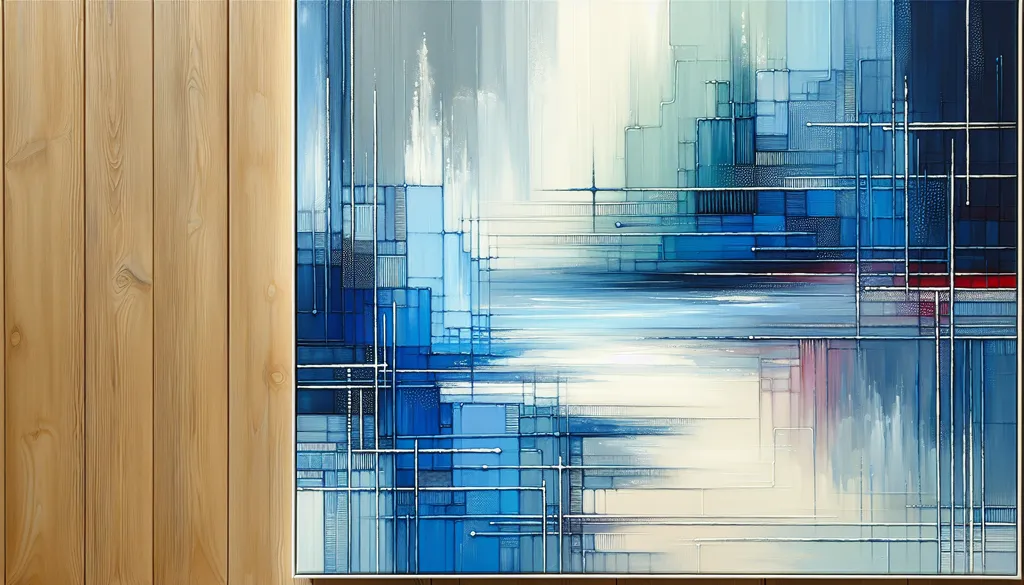
How UX Designers Can Improve Workflow Using Kanban in Google Workspace
Here is how you as a UX Designer can centralize feedback, manage design iterations, and streamline collaboration using Kanban task management in Google Workspace. Improve your workflow today.

Meet Cole: A UX Designer at Stellar Labs
Meet Cole, a UX designer at Stellar Labs. He's responsible for making sure their SaaS product, a complex project management platform, is both powerful and intuitive for users. Initially, Cole tried managing his own workflow using a combination of sticky notes, spreadsheets, and various design tools. The chaos quickly escalated:
- Sticky Note Nightmare: Design ideas scattered across his desk, often lost or illegible.
- Spreadsheet Overload: Tracking user research, design iterations, and feedback in separate spreadsheets became a logistical nightmare.
- Tool Fatigue: Constantly switching between different design and collaboration tools disrupted his flow and wasted valuable time.
The result? Missed deadlines, inconsistent designs, and a growing sense of frustration. That's when Cole discovered Kanban Tasks, a Chrome extension that integrates seamlessly with his Google Workspace. It gave him a visual, centralized hub for managing his entire UX workflow—all within the familiar Google environment.
Why a Kanban Approach for UX Design?
Kanban isn't just for developers. It's a powerful visual system that helps UX designers like Cole:
Visualize the Design Process: See all your tasks, from user research to prototyping, laid out in clear columns. This provides a bird's-eye view of the entire design process, making it easier to track progress and identify bottlenecks.
Manage Multiple Projects: Juggling multiple projects? Create separate Kanban boards for each, keeping everything organized and preventing tasks from getting mixed up.
Prioritize User Feedback: Integrate user feedback directly into your workflow. Attach user research findings, usability test results, and design iterations to specific tasks. This keeps all relevant information in one place, making it easier to iterate and improve designs.
Step 1: Centralize User Research & Insights
Cole starts by bringing order to his user research:
- Consolidate Research Findings: Instead of scattered spreadsheets and documents, he attaches all user interviews, survey results, and competitive analysis reports to relevant tasks on his Kanban board.
- Create User Personas: He develops user personas based on his research and adds them to the board as reference points for the entire design team.
Pro Tip: Use tags to categorize user research by project, user segment, or research method. This allows for easy filtering and retrieval of information.
Step 2: Streamline Information Architecture Design
Next, Cole tackles information architecture:
- Visualize Sitemaps: He creates visual sitemaps and attaches them to relevant tasks. This ensures everyone on the team has a clear understanding of the website's structure.
- Manage Content Hierarchy: He uses the Kanban board to track the development of content hierarchies and labeling systems, ensuring consistency across the platform.
Step 3: Manage Interaction Design with Kanban
Cole uses Kanban Tasks to manage the iterative nature of interaction design:
- Wireframing & Prototyping: He creates tasks for each wireframe and prototype, attaching the actual files directly to the cards. This makes it easy to track versions and gather feedback.
- User Flow Mapping: He visualizes user flows on the board, mapping out the steps users take to accomplish specific tasks. This helps identify potential usability issues early in the design process.
Step 4: Collaborate with UI Designers & Developers
Kanban Tasks becomes Cole's central hub for collaboration:
- Design Handoff: He seamlessly hands off designs to UI designers by assigning tasks and attaching all relevant design files.
- Developer Collaboration: He communicates design specifications to developers, ensuring everyone is on the same page.
No More Email Chains: All communication and feedback happen directly on the Kanban board, eliminating the need for lengthy email threads and ensuring everyone has access to the latest information.
Step 5: Integrate Usability Testing & Feedback
Cole incorporates usability testing seamlessly into his workflow:
- Track Usability Test Results: He attaches usability test reports and user feedback directly to relevant tasks, making it easy to analyze findings and iterate on designs.
Pro Tip: Use checklists within task cards to track usability testing tasks, ensuring all necessary steps are completed.
Step 6: Leverage the "Get Work Done" Board for Daily Focus
Cole uses the "Get Work Done" board to prioritize his daily tasks:
- Focus on High-Priority Tasks: He quickly identifies tasks due today or this week, ensuring he stays on track and meets deadlines.
Step 7: Supercharge Your Workflow with Advanced Features
Cole leverages Kanban Tasks' advanced features to further optimize his workflow:
- Attachments: Attach design files, user research documents, and other relevant materials to each task.
- Tags: Categorize tasks by project, user segment, or design phase for easy filtering.
- Checklists: Break down complex tasks into smaller, manageable steps.
Step 8: Continuously Improve Your Process
Kanban Tasks provides valuable insights into Cole's workflow:
- Identify Bottlenecks: See where tasks are getting stuck and identify areas for improvement.
- Optimize Workflow: Adjust his process based on data and feedback.
Wrapping Up
UX designers like Cole need a system that keeps them organized, facilitates collaboration, and allows them to focus on what matters most: creating exceptional user experiences. Google Workspace provides the tools, but Kanban Tasks provides the structure. It's a game-changer for UX designers who want to streamline their workflow, improve collaboration, and deliver exceptional user-centered designs.
Ready to transform your UX workflow?
- Install Kanban Tasks from the Chrome Web Store.
- Create your first board, invite your team, and start visualizing your design process.
- Say goodbye to chaos and hello to streamlined UX design.
FAQ
1. What kind of support does Tooling Studio offer?
We offer comprehensive support via email, live chat, and a detailed knowledge base to help you get the most out of Kanban Tasks.
2. What is Tooling Studio? Is Kanban Tasks your only product?
Tooling Studio creates powerful Chrome extensions that enhance Google Workspace. Kanban Tasks is our flagship product, but we're constantly developing new tools to boost productivity.
3. Why do UX designers need Kanban Tasks if they already use design tools?
Kanban Tasks complements your existing design tools by providing a centralized hub for managing your entire UX workflow—from user research to prototyping and usability testing. It integrates seamlessly with Google Workspace, eliminating the need to constantly switch between different tools.
4. How do I install Kanban Tasks?
Simply add it from the Chrome Web Store. It integrates directly with your Google account.
5. What upcoming features can I expect?
We're always adding new features! Check our website for the latest updates and roadmap.
6. How secure is my data with Tooling Studio?
We take data security seriously. We use robust encryption and follow best practices to protect your information.
7. Can I collaborate with my team in real time?
Absolutely! Invite team members to your boards, assign tasks, and see updates instantly.
8. Will I get notifications?
Yes, you'll receive email notifications for new assignments, comments, and due date reminders.
9. Which browsers are supported?
Kanban Tasks is optimized for Google Chrome. While it may function on other Chromium-based browsers, we recommend Chrome for the best experience.
10. How does Kanban Tasks improve my UX workflow?
Kanban Tasks brings structure and clarity to your UX process. It centralizes tasks, improves communication, and facilitates collaboration, allowing you to focus on creating great user experiences.